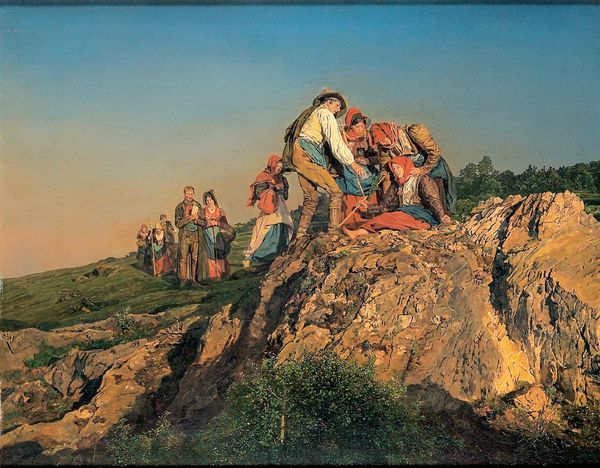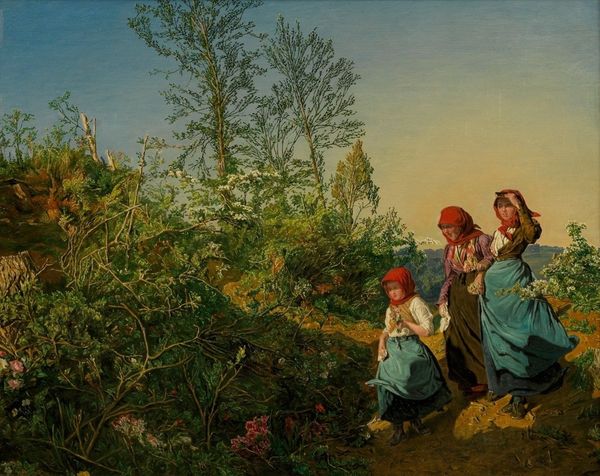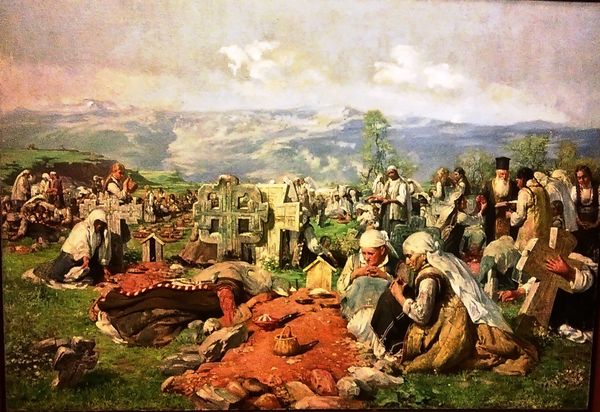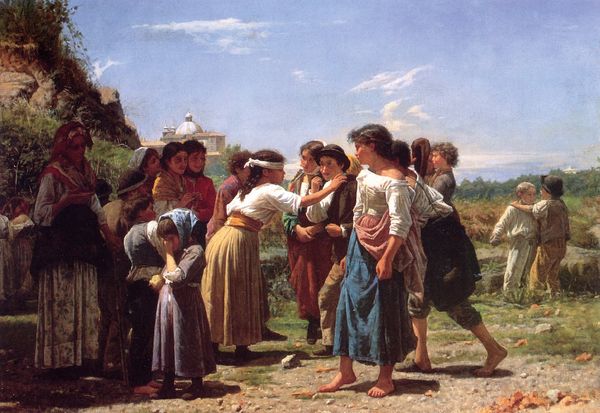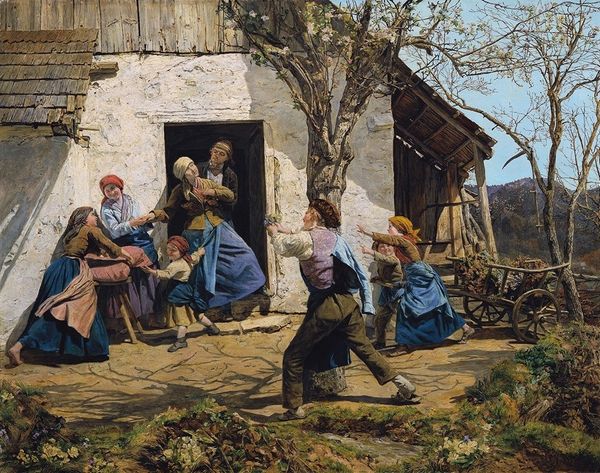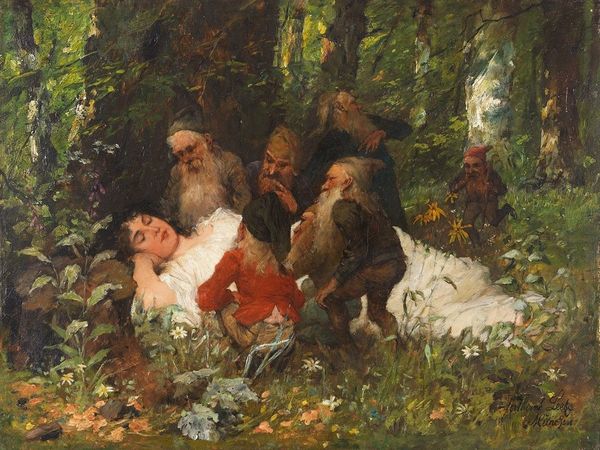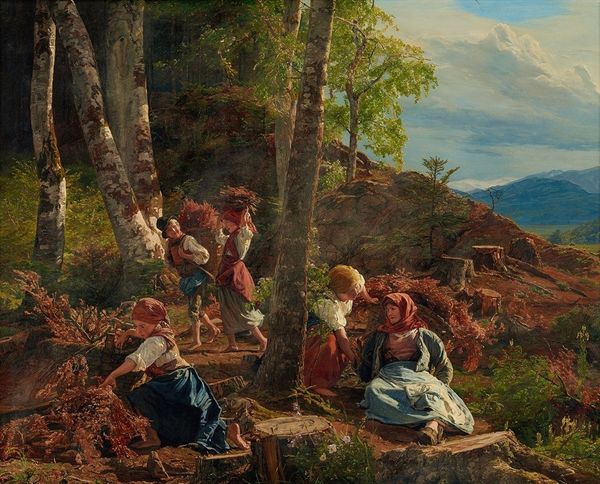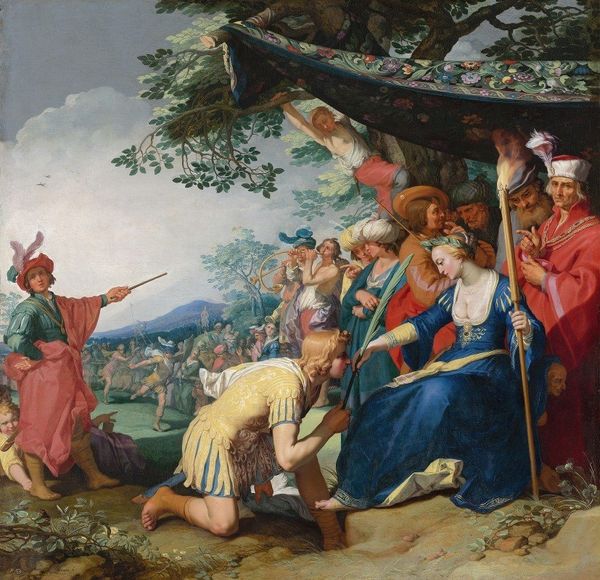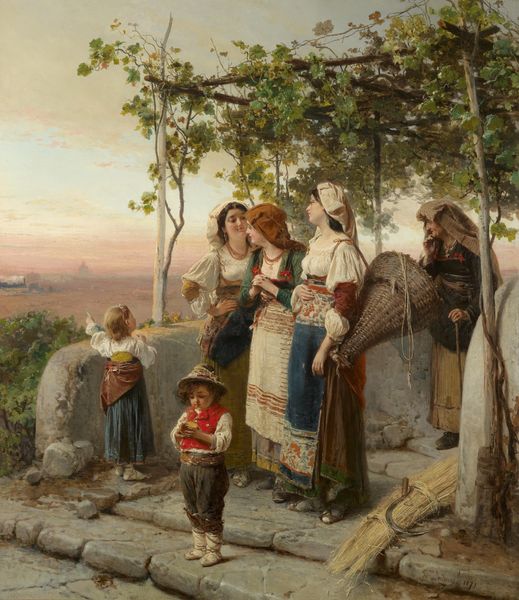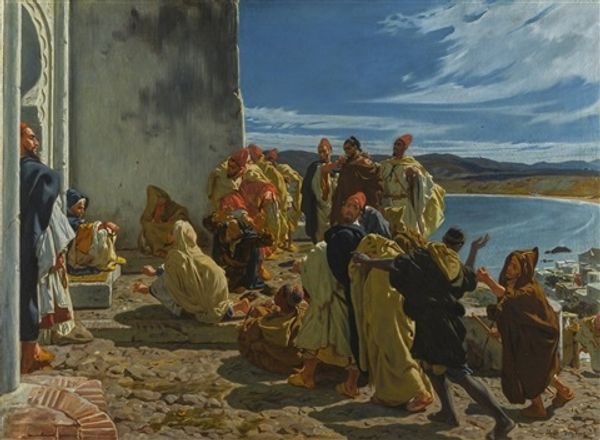
Dimensions: 71 x 87 cm
Copyright: Public domain
Editor: We’re looking at “The Sick Pilgrim,” painted in 1859 by Ferdinand Georg Waldmüller, using oil on canvas. It strikes me as a scene of both communal support and individual suffering, nestled within this landscape. What stands out to you in this piece? Curator: Immediately, I consider the very material realities depicted: the textures of the fabric of their clothing, which tells of both labour and consumption. How do the materials utilized connect these individuals to their surroundings and societal structure? Their roughspun cloths speak volumes about their station and how their lives were materially constructed. Editor: So you're saying the very clothing material shows their social position? I never considered art from that point of view. How does their labour factor into it, the way you describe? Curator: Consider how they produce such materials –the whole economic system and production – these realities dictate their daily lives, including religious rituals and, here, apparent medical distress. The materiality connects this landscape to a lived experience. Consider, how accessible would resources be for Waldmüller himself to depict it so? Is this objective Realism or Romaticism reflecting his privilege and how that informs his perspective? Editor: That’s such a nuanced way of reading this artwork! Thinking about the materials used and the economic background changes how I see everything. So, it is less about pilgrimage or even the ‘sickness’ of an individual, but more about how material processes affected this group and Waldmuller's position observing it all. Curator: Precisely! Art is invariably a product of tangible, socioeconomic conditions; appreciating that elevates analysis of what is rendered – or what remains unseen – beyond purely aesthetic or superficial appreciation.
Comments
No comments
Be the first to comment and join the conversation on the ultimate creative platform.
